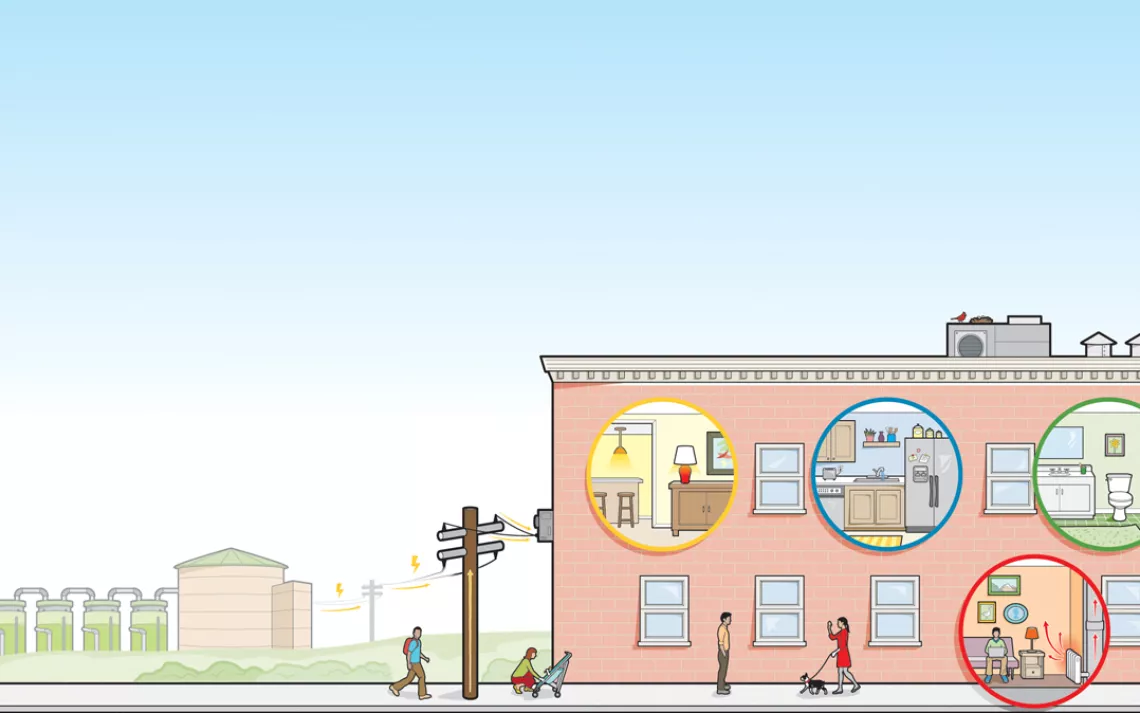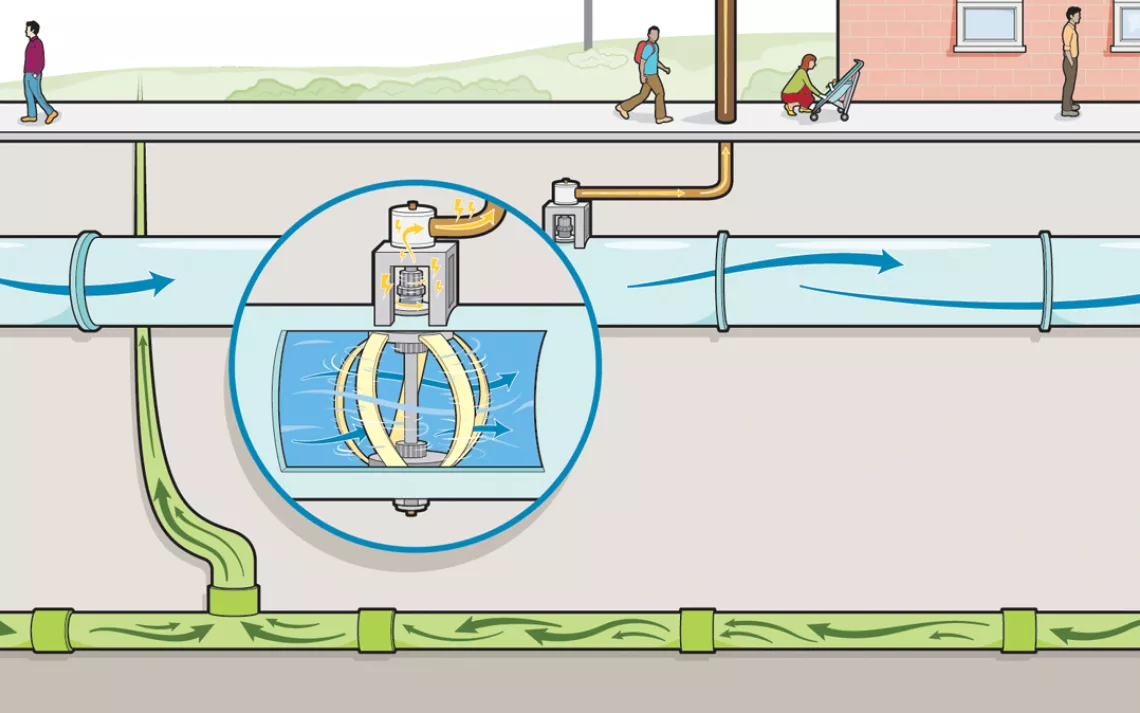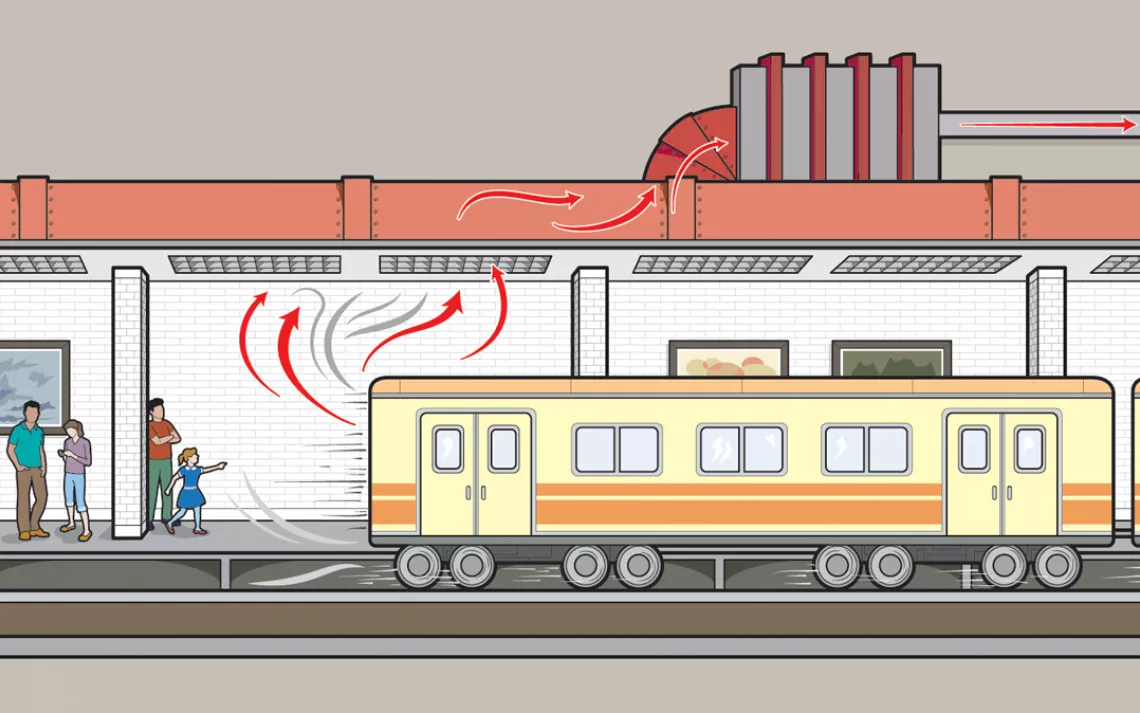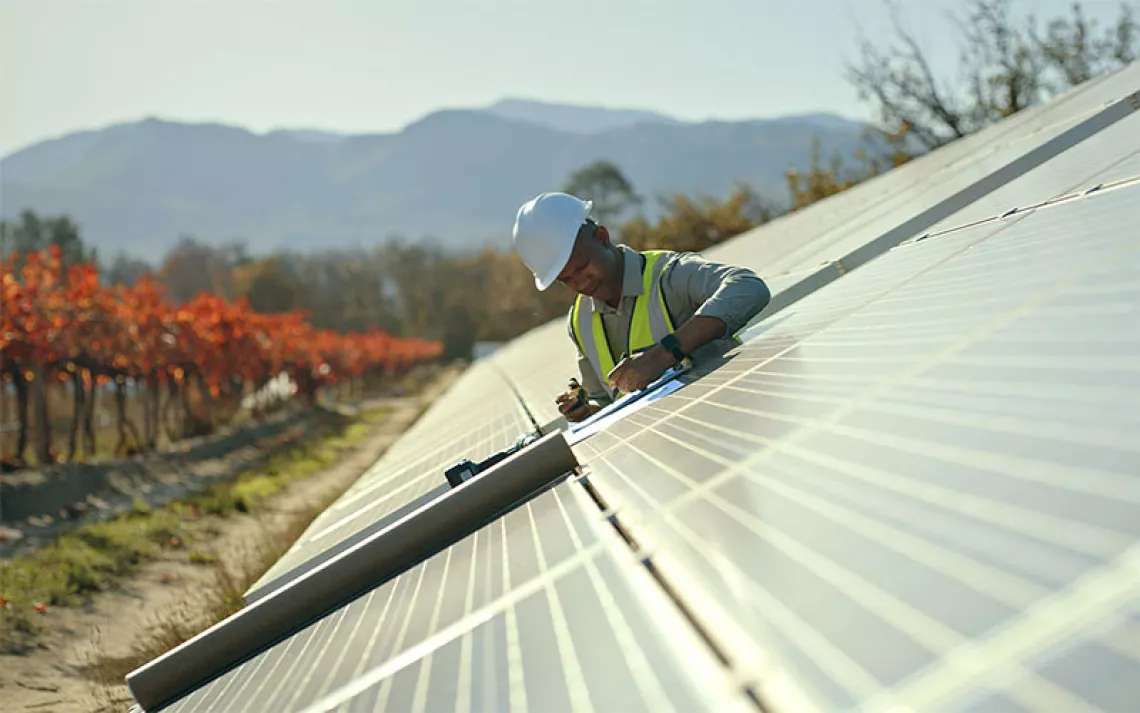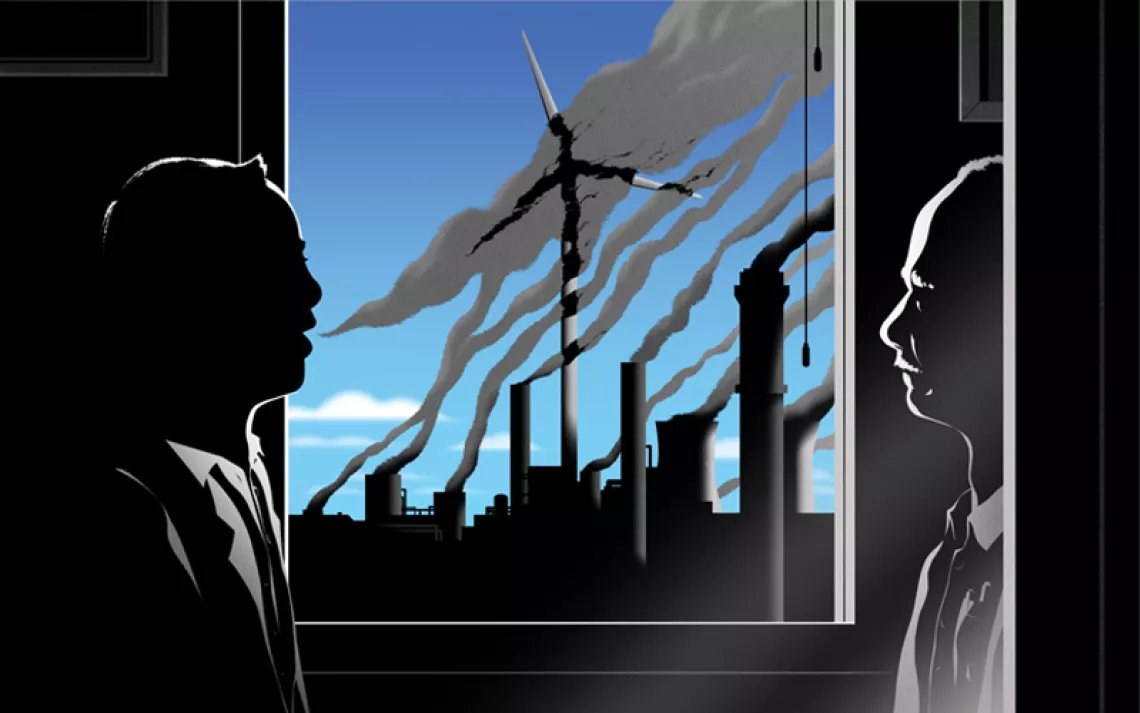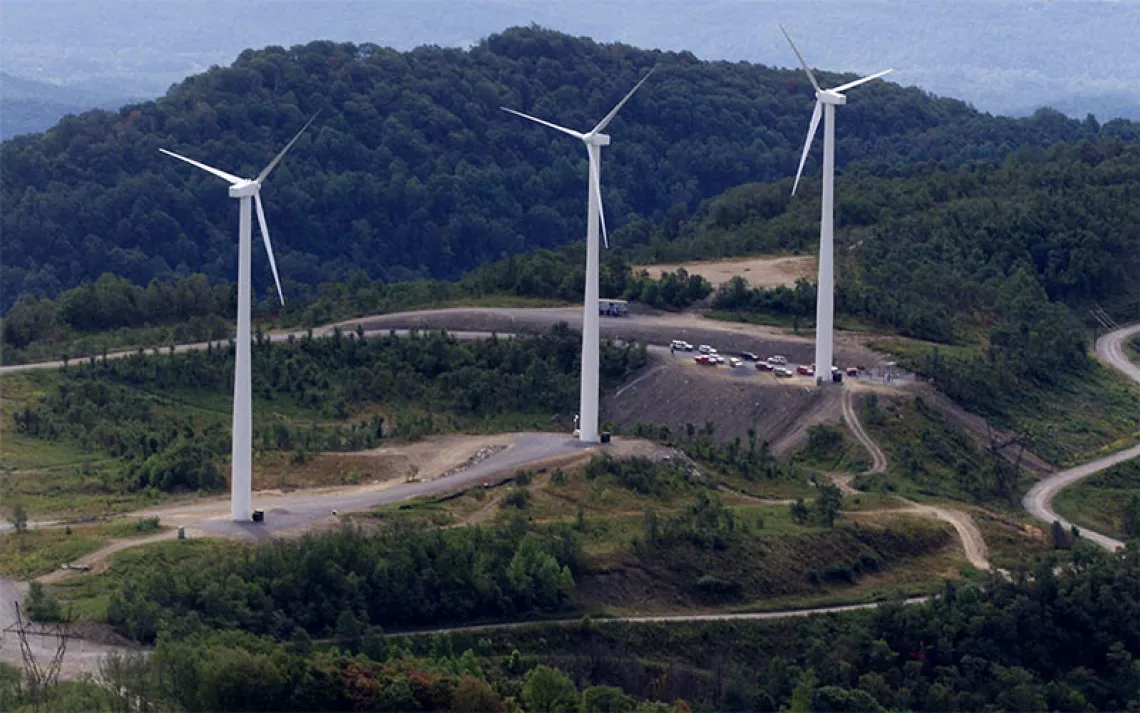Clean Energy From Unlikely Sources
Walking through a bustling city, most people don't think about the complex network of conduits and pipes buried beneath the roadways. Yet clever engineers have realized that this infrastructure, which allows for the movement of drinking water, subways, sewage, and much more, also holds untapped potential. Here are three ingenious ways cities are harnessing existing infrastructure to provide extra energy.
Illustrations by Brown Bird Design
This article appeared as "Scavenged Energy" in the November/December 2015 print edition of Sierra.
 The Magazine of The Sierra Club
The Magazine of The Sierra Club
